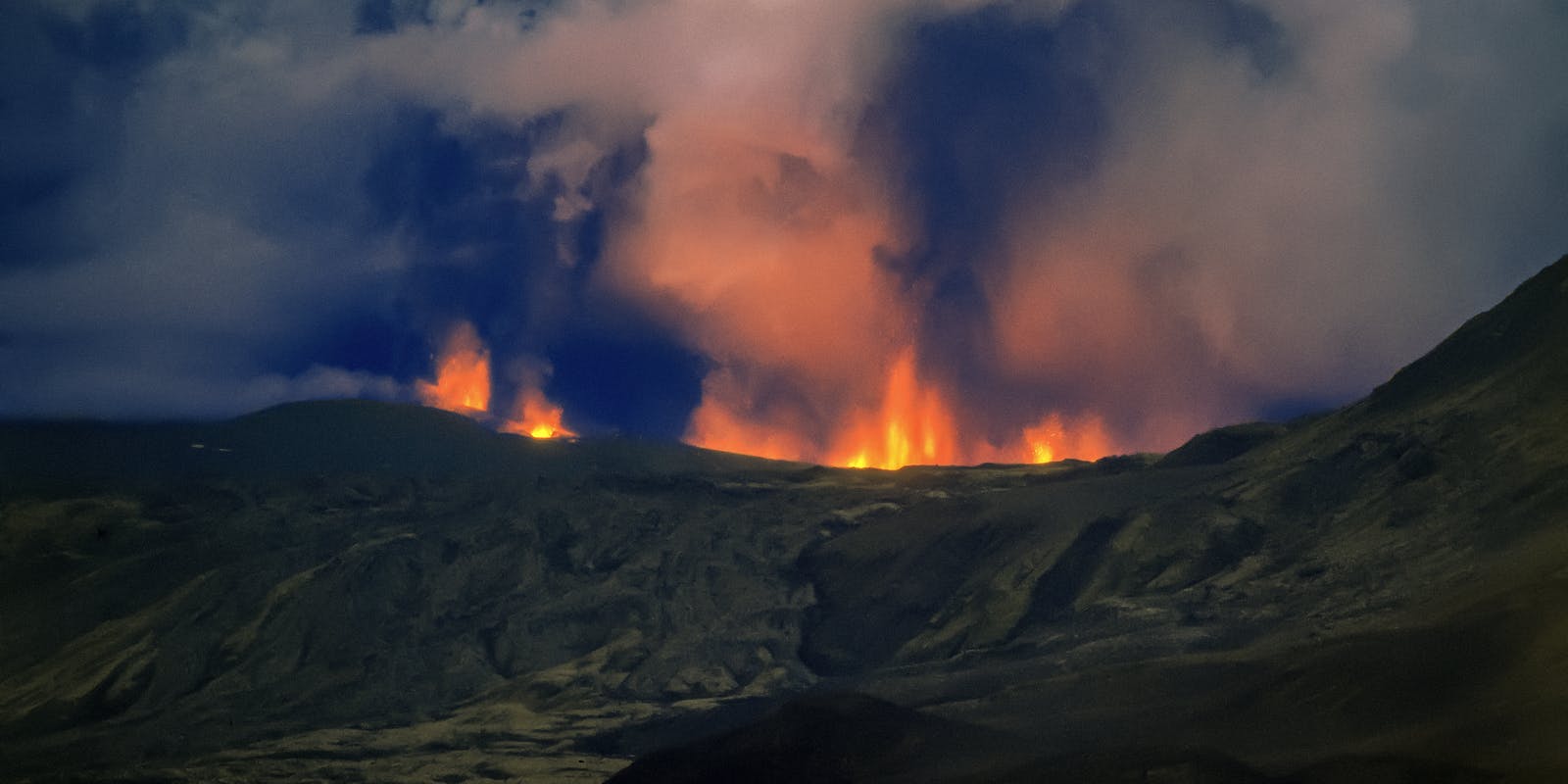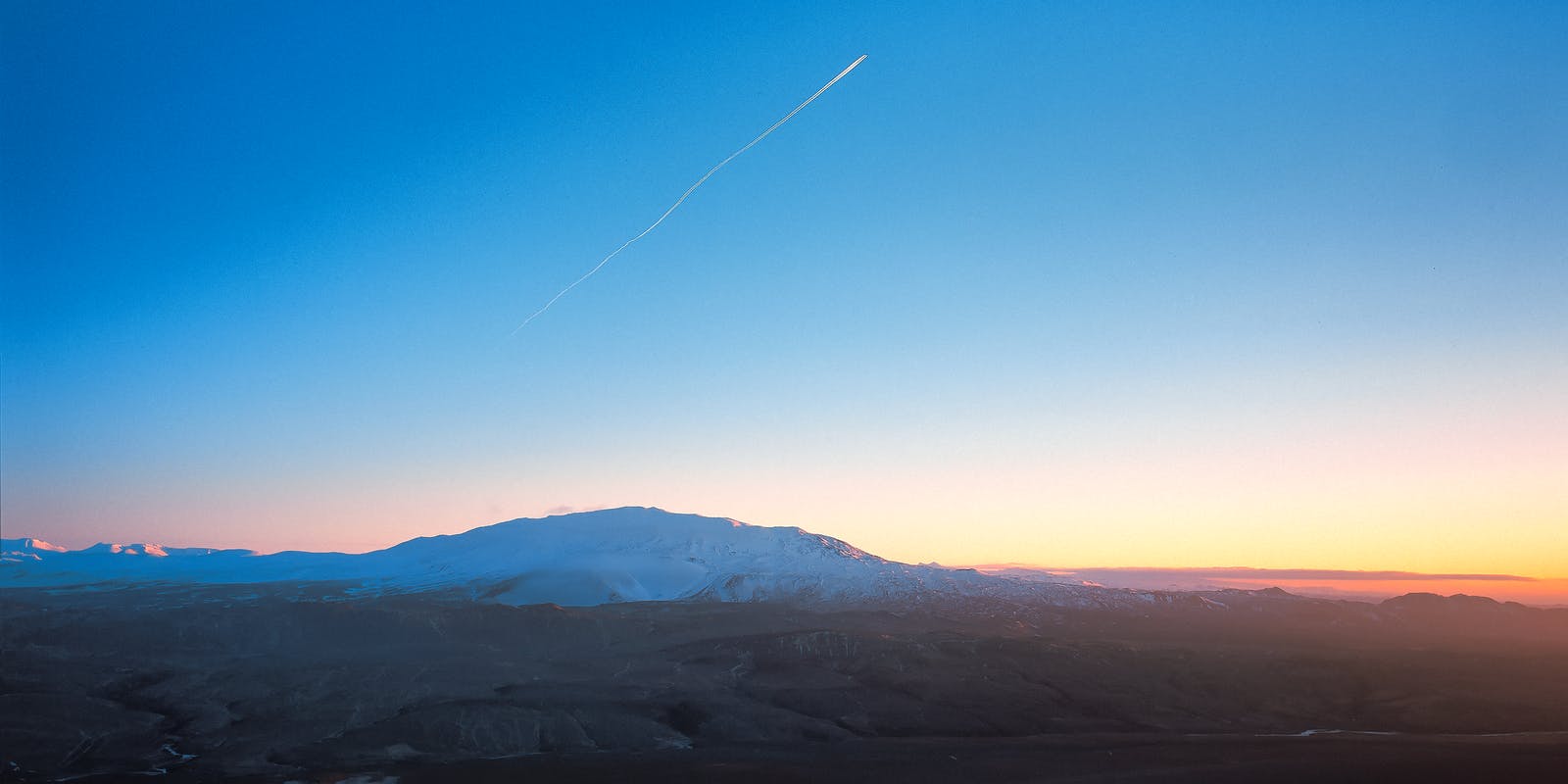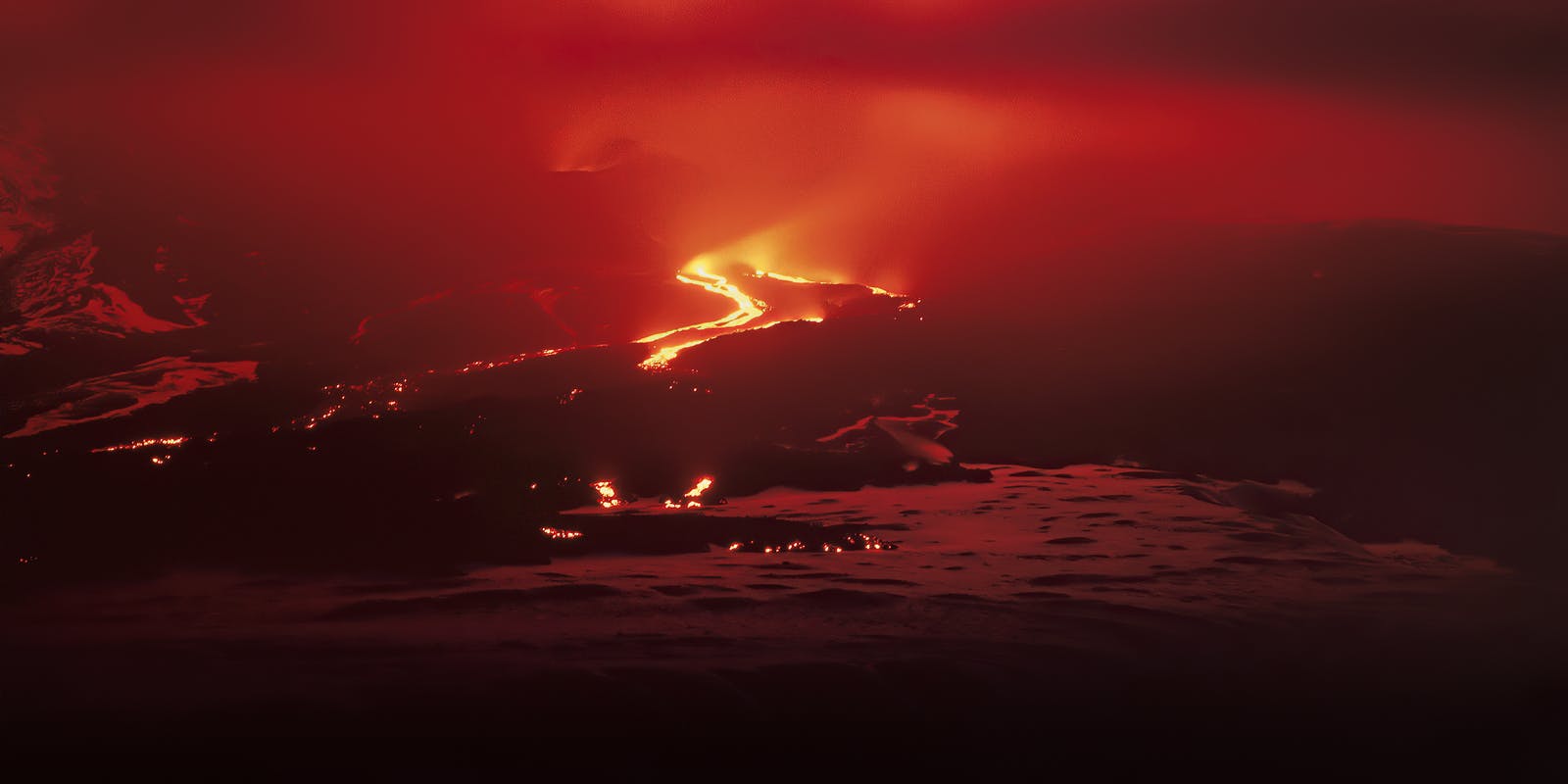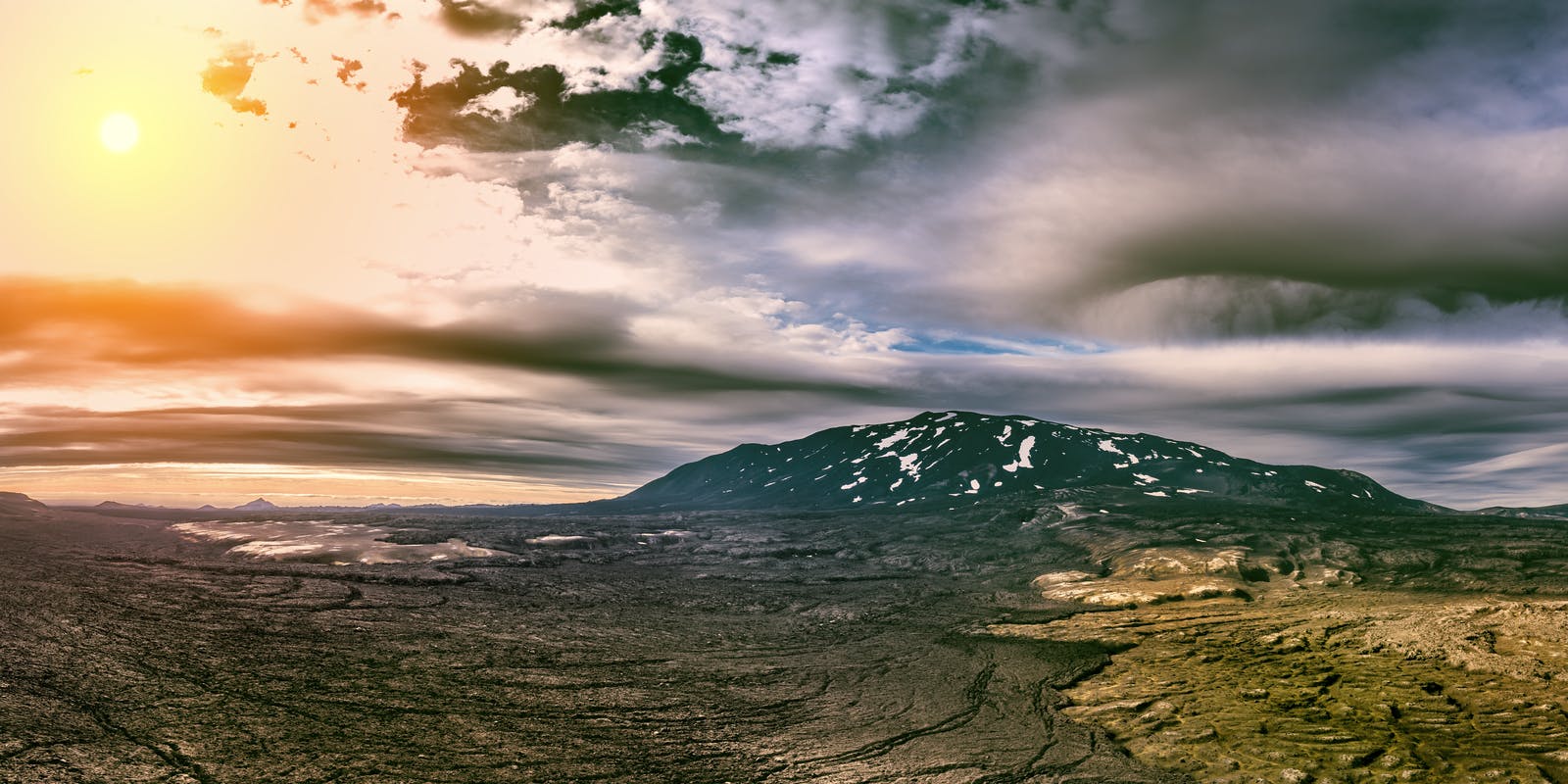
The Eruptions of Hekla Volcano
Mount Hekla is known to be the most active volcano in the country today, even though there hasn't been an eruption since 2000. Reaching a height of 1490 metres (4,891 ft), Hekla has erupted five times in the last hundred years and more than 20 times since Iceland was settled in the 10th century. Its last significant eruption was in 2000, and as with all volcanoes, geologists follow every quake and tremor, on alert for the next eruption.
What Type of Volcano is Hekla?

Hekla is a stratovolcano south of Iceland, part of a volcanic ridge that stretches 40 kilometres (25 miles) long.
Hekla Eruption History
Hekla's earliest recorded eruption took place in the year 1104. It is estimated that there have been between 20 and 30 significant eruptions, with the volcano remaining active for six years with little interruption. Scientists have found a general correlation that the longer Hekla remains dormant, the larger and more catastrophic its next eruption will be. Information about the most recent volcanic eruptions in Hekla is below.
Hekla’s Eruption in 2000

Hekla's most recent eruption was in February 2000. It began on February 26 and officially ended on March 8, making it a relatively short eruption. Eruption activity was the strongest during the first hour, and by the evening, Hekla's fissure opened to an impressive length of roughly 7 kilometres. The column of steam and ash rose to an incredible height of almost 15 km.
Hekla’s Eruption in 1991
From January 17, 1991, to March 11, 1991, a level 3 eruption produced 0.15 km³ of lava and tephra. The eruption, preceded by earthquakes and sulfurous odours, produced an ash cloud reaching an altitude of 11.5 km within 10 minutes and travelled over 200 km north to the coast within 3 hours.
Hekla’s 1980/1981 Eruptions
A level 3 eruption began on August 17, 1980. A mixed eruption opened along a length of 7 km and produced a lava volume of 0.12 km³. Shortly before the eruption began, a column of ash and steam was produced, eventually reaching a height of 15 km. Lava was first produced close to the summit but quickly spread to other parts of the fissure, covering a massive area of 22 km² in just one day.
Meanwhile, the level 2 eruption in 1981 was considered a continuation of the previous year's eruption, beginning on April 9, 1981, and produced 3×107 m³ of lava, lasting until April 16, 1981. The eruption spewed ash to a height of 6.6 km, and a new crater formed at the summit.
Immerse Yourself in a Volcanic Eruption
Step into the heart of an ancient force and witness the fury of a volcanic eruption at Perlan's Volcano Show. Journey to Geldingadalir, a location just 30km from Reykjavík, where a volcanic eruption occurred for the first time in over 800 years. The Volcano Show brings the Geldingadalir eruption to life, allowing you to experience the sheer power and beauty of flowing lava and explosive eruptions.
Whether you’re planning a visit or just fascinated by geology, it’s worth checking which active volcanoes Iceland is monitoring closely this year.
FAQ

How many people died in the Hekla eruption of 2000?
There were no deaths in the 2000 eruption of Hekla.
What would happen if Hekla erupted?
The result of a Hekla eruption would depend on its size. There would likely be earthquakes and sulfurous smells before the eruption, and authorities would issue warnings. Tours to the region would be cancelled, and roads to the area would be closed if warranted. Geologists constantly monitor the volcanoes on the island, and procedures are in place to keep people safe during a volcanic eruption. There is no need to feel unsafe during a trip to Iceland.







